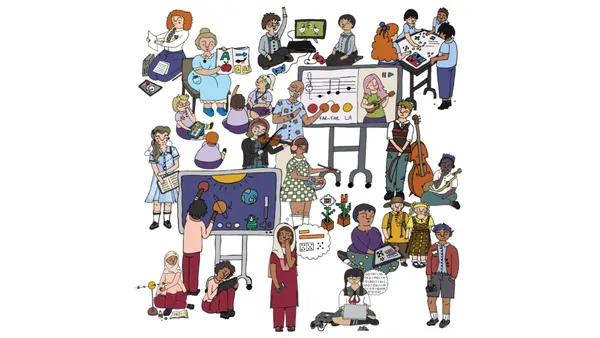Dive Brief:
- In counties hardest hit by the recession, school spending cuts were associated with “sizeable losses” in student achievement, according to a new study appearing in AERA Open, a journal of the American Educational Research Association.
- In these areas, students in grades 3-8 achieved about 25% less than expected between the 2008-09 and 2014-15 school years, and the sharpest declines were seen in districts serving a high proportion of students eligible for free or reduced-price lunch and African American students. “Thus, between-district achievement gaps may have widened as a result of the Great Recession,” write authors Kenneth Shores of Pennsylvania State University and Matthew Philip Steinberg of George Mason University.
- While per-pupil revenues declined on average $900 nationally, the decline was as much as $600 more in counties with the greatest job losses, and the negative impact on achievement was also greater among older students compared to their younger peers — a finding that differs from past research. The researchers suggest teacher layoffs may have been concentrated in higher grades.
Dive Insight:
With economists debating the likelihood of another recession or downturn, the study provides some guidance for how policymakers and district officials might respond if the more dire predictions become reality.
The analysis covered 2,548 counties across the U.S. and used multiple data sources, including student achievement results from the Stanford Education Data Archive, demographic information from the U.S. Department of Education and county-level economic data.
The recession didn’t hit every community the same way, but the federal stimulus package passed in 2009 — the American Recovery and Reinvestment Act — “neglected this variation,” Steinberg said in a press release. He suggests any future economic recovery efforts “be targeted to schools that not only serve the most vulnerable student populations but that also are located in communities that are the most vulnerable to the adverse consequences of an economic recession.”
At the district level, the results have implications for how leaders make staffing decisions, such as class sizes, when spending is in decline. More research is also needed, the authors write, in “how districts may redistribute resources differently across schools and grades during periods of districtwide spending declines” — decisions that could have an impact on students’ equitable access to educational resources.







 Dive Awards
Dive Awards






